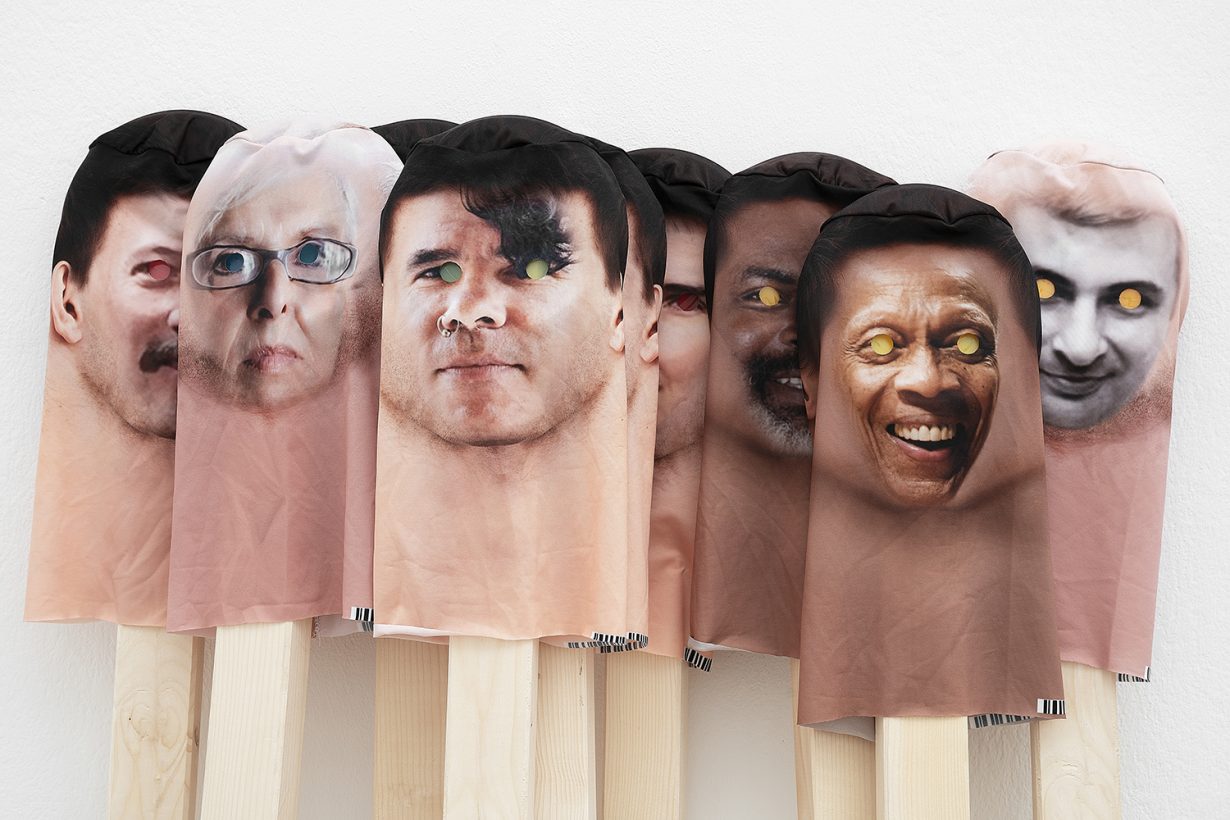Global Artworld 1850-1950: An Art Review Of Modern Life And Its Influences

Table of Contents
The Rise of Realism and its Global Echoes (1850-1880)
The mid-19th century witnessed the rise of Realism, a reaction against the Romanticism that dominated the earlier part of the century. This movement prioritized depicting the world as it was, focusing on everyday life, social issues, and the impact of industrialization.
Realism in Europe:
Realism in Europe found its champions in artists like Gustave Courbet and Jean-François Millet. These painters rejected idealized representations in favor of unflinching portrayals of the working class and peasant life.
- Emphasis on social commentary: Courbet's "The Stone Breakers" (1849) is a prime example, starkly depicting the harsh realities of manual labor.
- Rejection of Romanticism: Realism's focus on objective representation stood in stark contrast to Romanticism's emphasis on emotion and idealized landscapes.
- Influence on subsequent movements: Realism's commitment to portraying the realities of the modern world laid the groundwork for later movements like Impressionism and even some aspects of early Modern art.
Courbet's unflinching depictions of laborers and his commitment to portraying the realities of his time, coupled with Millet's poignant portrayals of peasant life, set the stage for a new era in art, one concerned with representing the realities of the modern world, impacting the trajectory of the Global Artworld 1850-1950. The impact of industrialization is evident in the depictions of factories, mines, and the changing urban landscape, reflecting the rapid societal transformations of the time.
Realism's Transatlantic Journey:
Realism's influence wasn't confined to Europe. American artists also embraced this new style, adapting it to their own unique socio-political context.
- Specific American Realist painters: Thomas Eakins, known for his meticulous anatomical studies and realistic portraits, and Winslow Homer, famous for his depictions of everyday life and landscapes, stand out as key figures.
- Unique socio-political context: American Realism reflected the nation's ongoing grapple with issues like slavery, the Civil War, and the rapid expansion westward.
Comparing European and American Realism reveals both similarities and differences. While both shared a commitment to depicting reality, American Realists often focused on themes of national identity and the changing landscape of the young nation, setting them apart from their European counterparts.
Realism in Asia:
While less prominent than in Europe and America, echoes of Realism's emphasis on depicting the everyday world can be found in some Asian art of this period. However, the specific manifestations differed greatly due to existing artistic traditions and cultural contexts. Further research is required to fully explore these nuances. The limited but significant presence of Realism outside Europe and North America demonstrates the growing interconnectedness of artistic styles despite the differences in artistic traditions.
Impressionism and the Dawn of Modernity (1870-1900)
Impressionism, emerging in France in the 1870s, marked a radical departure from Realism. It shifted the focus from representing objective reality to capturing subjective impressions and fleeting moments.
Key Impressionist Figures and their Innovations:
Claude Monet, Pierre-Auguste Renoir, Edgar Degas, and others revolutionized painting through their innovative techniques.
- Broken color and en plein air painting: Impressionists used short, broken brushstrokes of pure color and painted outdoors ("en plein air"), capturing the effects of light and atmosphere.
- Themes of light and fleeting moments: Their paintings focused on the transient beauty of light, capturing momentary effects rather than striving for perfect representation.
- Influence on later movements: Impressionism's emphasis on light, color, and subjective experience had a profound impact on Post-Impressionism, Fauvism, and other subsequent movements in the Global Artworld 1850-1950.
Monet's "Impression, Sunrise" (1872), which gave the movement its name, exemplifies this radical shift in artistic approach. The painting's focus on capturing the fleeting impression of light and atmosphere, rather than a precise representation of the scene, heralded a new era in painting.
The Spread of Impressionistic Styles:
Impressionism's influence spread rapidly, inspiring artists across the globe. However, artists often adapted the style to their own cultural contexts. Studying the adaptation of Impressionism showcases the complexity of artistic exchange within the Global Artworld 1850-1950.
- Variations and adaptations: Artists in different countries incorporated elements of Impressionism while retaining aspects of their own artistic traditions.
- Cultural context: The unique socio-cultural context of each region influenced how Impressionistic principles were interpreted and expressed.
Post-Impressionism and its Divergent Paths:
Artists like Vincent van Gogh, Paul Cézanne, and Paul Gauguin built upon Impressionism but moved in distinct directions.
- Individual styles and break from pure Impressionism: Each artist developed a unique style, moving away from the purely objective focus of Impressionism towards a more subjective and expressive approach.
- Subjective expression and symbolism: Post-Impressionists explored personal emotions, symbols, and subjective interpretations of the world.
Post-Impressionism's exploration of individual expression and subjective experience paved the way for the even more radical experiments of early 20th-century art movements.
The Rise of Modern Art Movements (1900-1950)
The early 20th century witnessed an explosion of new art movements, each challenging established conventions and reflecting the turbulent social and political climate of the time.
Fauvism, Expressionism, Cubism, Surrealism:
These movements, among others, represent the major shifts that characterized the modern art world.
- Fauvism: (Matisse) Emphasized bold colors and expressive brushwork.
- Expressionism: (Munch) Focused on conveying intense emotions and subjective experience.
- Cubism: (Picasso) Broke down forms into geometric shapes and multiple perspectives.
- Surrealism: (Dalí) Explored the realm of dreams and the unconscious mind.
The socio-political context of these movements—including the rise of industrialization, two World Wars, and rapid technological advancements—significantly influenced their development and underlying philosophies. Psychology and philosophy, particularly Freudian psychoanalysis, also had a profound impact on the art of this period.
Global Variations and Adaptations:
These movements weren't limited to Europe. Artists around the world engaged with and adapted these styles to their own cultural contexts, leading to exciting variations and unique expressions.
- Specific examples: Researching specific artists from different regions helps to illustrate how these major movements were adapted and translated in different artistic contexts.
- Unique cultural interpretations: Understanding how local traditions and belief systems interacted with these imported modern artistic styles enhances our understanding of the Global Artworld 1850-1950.
The Impact of World War I and II:
The two World Wars profoundly impacted artistic production. The trauma, displacement, and social upheaval of these conflicts led to significant changes in aesthetic trends and artistic responses.
- Artistic responses: Artists grappled with the horrors of war, expressing their experiences through a variety of styles and mediums.
- Changes in aesthetic trends: The aftermath of the wars saw a shift away from some of the exuberance of earlier movements towards more introspective and often darker themes.
Conclusion:
The period between 1850 and 1950 witnessed a dramatic transformation in the global art world. From the realistic depictions of everyday life to the revolutionary explorations of modern art movements, artists across the globe responded to the rapid changes in society, technology, and politics. This review has only scratched the surface of this rich and complex period. Further exploration of the "Global Artworld 1850-1950" reveals a fascinating tapestry of artistic expression, underscoring the interconnectedness of artistic trends across cultures and continents. To delve deeper into specific movements or artists, further research is encouraged. Continue your journey into the fascinating world of art history and discover more about the significant impact of this period. Understanding the "Global Artworld 1850-1950" is crucial to a comprehensive understanding of art history.

Featured Posts
-
 Santos Admits Marshall Deserved Ufc 313 Victory A Fight Breakdown
May 19, 2025
Santos Admits Marshall Deserved Ufc 313 Victory A Fight Breakdown
May 19, 2025 -
 El Analisis De Alfonso Arus Sobre La Candidatura De Melody A Eurovision 2025 En Arusero
May 19, 2025
El Analisis De Alfonso Arus Sobre La Candidatura De Melody A Eurovision 2025 En Arusero
May 19, 2025 -
 Man City Mascot Hospitalised Erling Haaland Involved Police Investigation Underway
May 19, 2025
Man City Mascot Hospitalised Erling Haaland Involved Police Investigation Underway
May 19, 2025 -
 Trouver Un Logement A Gencay Conseils Et Informations Pratiques Pour Le Forum Du Logement
May 19, 2025
Trouver Un Logement A Gencay Conseils Et Informations Pratiques Pour Le Forum Du Logement
May 19, 2025 -
 La Critica De Alfonso Arus A Melody En Arusero Justificada O Exagerada
May 19, 2025
La Critica De Alfonso Arus A Melody En Arusero Justificada O Exagerada
May 19, 2025
